In this blog, I’m gonna show you the Complete SEO For Beginners and how to get your website to the first page of Google and get free organic traffic. And the training in this video is gonna be extremely beginner friendly.
So, even if you have no idea what SEO is, you’ll walk away with enough actionable advice to get started today. My name is Towhidul Jayan, and I’ve been getting websites to the top of Google since 2019 through my businesses, and the Search Initiative.
I also teach this stuff to nearly 3000 people through my course, The Affiliate Lab. Let’s take a trip back to 2019 when I created my first website. Back in the day, I was an electrical engineer, working 60-hour weeks in a cubicle, pretty much just hating life.
I read the “4-Hour Workweek” and I was sold on the idea of making money online. So, I created a Gratitude Journey, iPhone app. Built a website for it, and then was like, “Now, what? “How do I get people to actually come to this website?” “So, I started following the generic SEO advice I read online.
Advice like, “Create quality content,” and “Write for the reader.” What does this stuff even mean? It was no surprise that I wasn’t getting any results. But at that point, I had an epiphany. Wait for a second, I have an engineering background.
Let’s approach this scientifically. So, I started running controlled experiments and then Google’s algorithm started revealing itself to me. Since then, my results have been consistently on the up and up. But let’s back up for a bit.
Complete SEO For Beginners
What actually is SEO?
SEO stands for Search Engine Optimization. It’s the act of optimizing a website with the goal of increasing its performance on search engines such as Google. But what is Google even looking for? Let’s think about that for a minute.
Google wants its users to be happy. If you were to Google, “How to cook meatloaf,” what would make you happy? Well, that’s easy. You’d want the first listing you click on to give you a kick-ass meatloaf recipe.
That requires Google to be able to sift through millions of web pages on the internet to be able to figure out which article is the most relevant to what you’re looking for. But what if there are 30 million meatloaf recipes all over the internet?
Actually, there are. How is Google supposed to know which one is the best answer? That’s when Google’s algorithm looks at other factors. Such as whose website is the fastest, whose author is more credible, and how many other websites are linked to this recipe.
In this blog, I’m gonna lay out these Google ranking factors so you can start getting results today. Even if you hire an SEO expert, it’s still important to understand the basics. Otherwise, how would you know if they’re doing a good job or not?
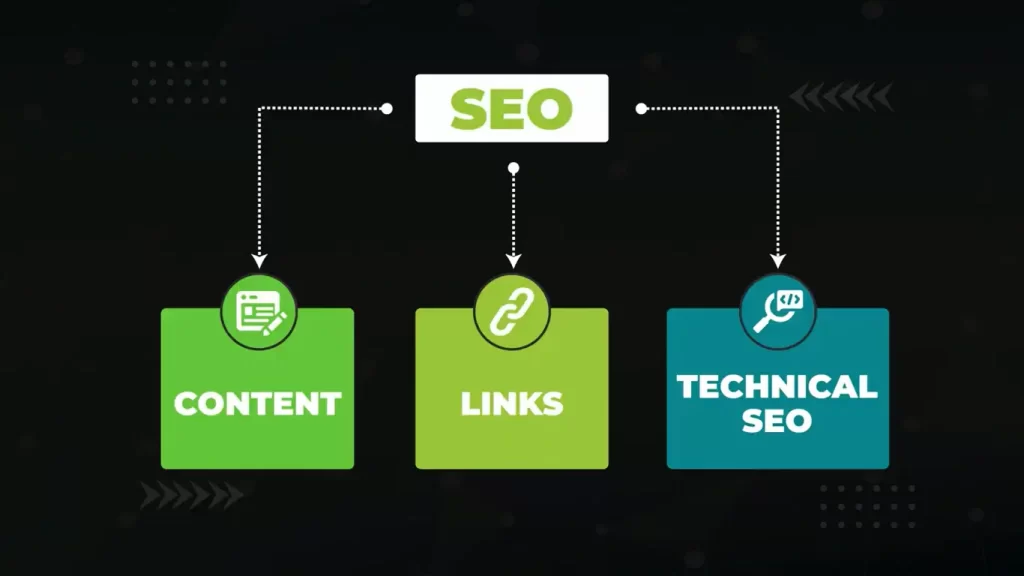
SEO is broken down into three main focus areas. First, we have content. The content you write on your site is the foundation of SEO. You’re not gonna get on page one of Google for “How to cook meatloaf” without posting a meatloaf recipe.
Next, we have links. When one website links to another website, Google considers this a vote of confidence. And lastly, we have technical SEO. This includes standards like having a fast website that looks good on mobile devices. I’m gonna explain these SEO focus areas as we go through this blog training. Starting with content.
How To Write Content For SEO?
The first vocabulary you need to understand on your path to becoming an SEO expert is the concept of keywords. Keywords are the words that someone types into Google when they’re searching for something.
When you’re writing content, each article you write should target specific keywords. The key, no pun intended, is to find keywords that are gonna help grow your business but aren’t too difficult. – Show me the money.
For example, ranking for a keyword like tennis would probably be life-changing for your supporting goods store. But the competition level is just too high. A keyword like, best tennis racket for beginners is much more reasonable, but will still drive sales.
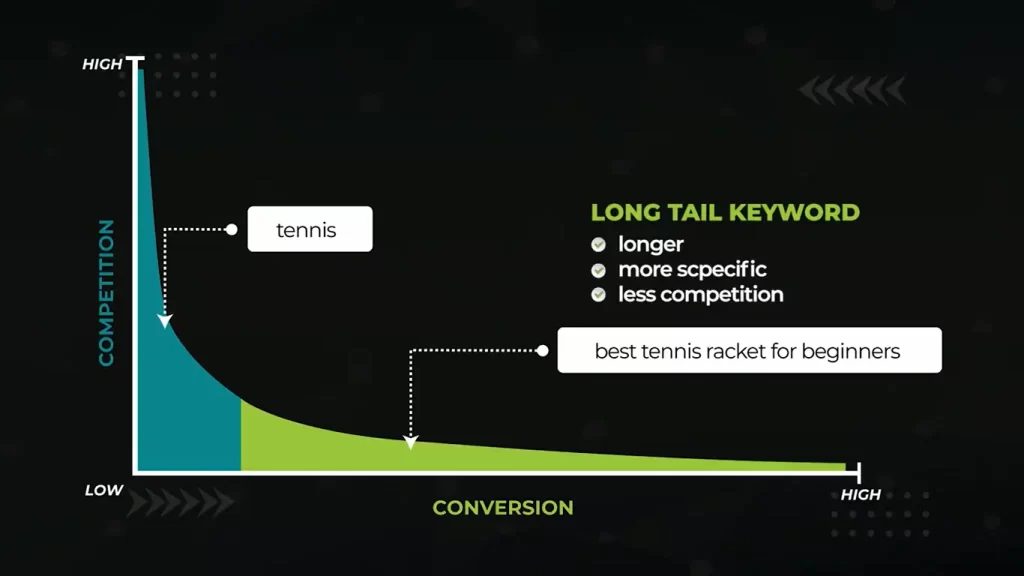
Best tennis racket for beginners is what we call a long tail keyword. Long tail keywords are longer, more specific, and have less competition.
Let’s say you have a website in the smart home niche and you’re looking to write some content on smart home gift ideas to buy others.
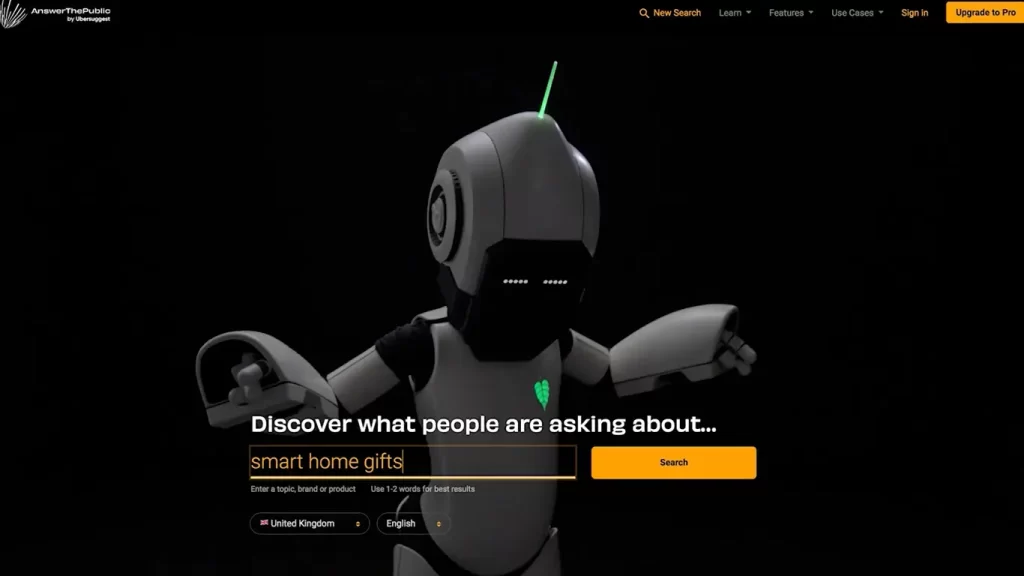
Head on over to the free tool, answerthepublic.com, and type smart home gifts here. This is gonna give you a big list of topic ideas to choose from, and the great thing about AnswerThePublic is that all these keywords are long tail, more specific, and less competition.
For the rest of this training, we’ll use the best smart home candles as a walkthrough example. The first thing we need to do is figure out what type of article Google expects to see for the keyword best smart home candles. We do that by googling it and taking a look.
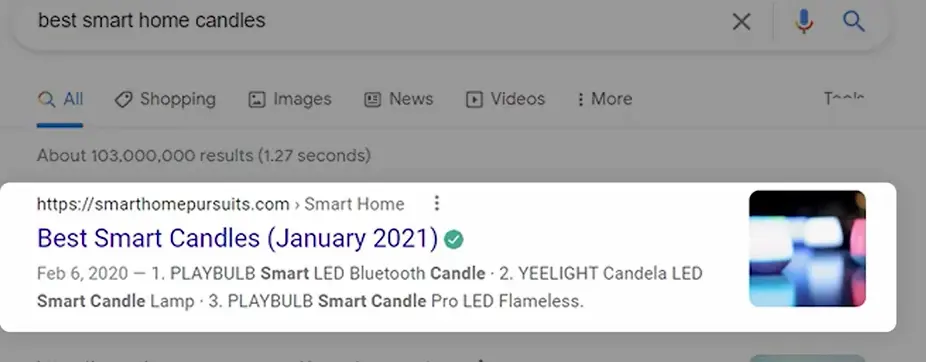
Let’s open this first article by Smart Home Pursuits. Well, the first thing you notice is that this article was written in 2021 so it’s outdated and should be easy to beat. Let’s analyze its format.
When you scroll down, you’ll see it has a brief introduction then a section on what actually are smart candles, a recommendation on their best one, and then we get into a listicle format showing their rankings as smart candles one by one.
Google has already shown us that it likes this listicle format so we should follow suit. It’s time to write the title of your article. Create your title with the following rules.
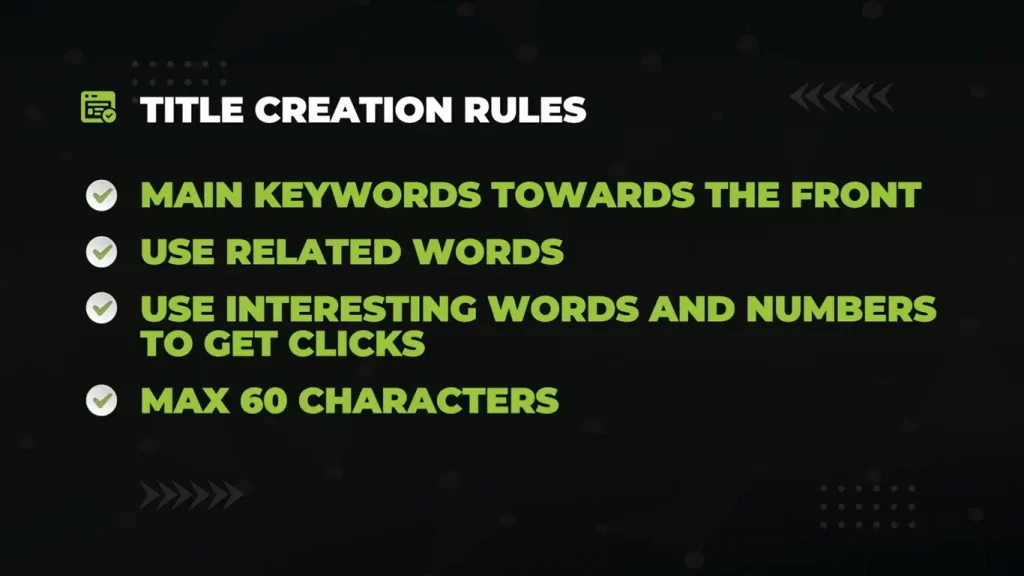
Keep the main keyword towards the front. Use related keywords to make the algorithm happy. Use interesting words, dates, and numbers to encourage clicks and keep the link to about 60 characters.
For our article, I suggest using “Best smart home candles of the current year,” and “Top five flameless lights.” It’s all these requirements straight on. Now,
where do you write this title?
In two places. The first place will be at the top of your article. This can be done in your WordPress editor by filling out the field here for the title. The second place will be your title tag.
This requires you to install an SEO plugin like Yoast or Rank Math. Both are free. Go ahead and drop your title right here in this spot.
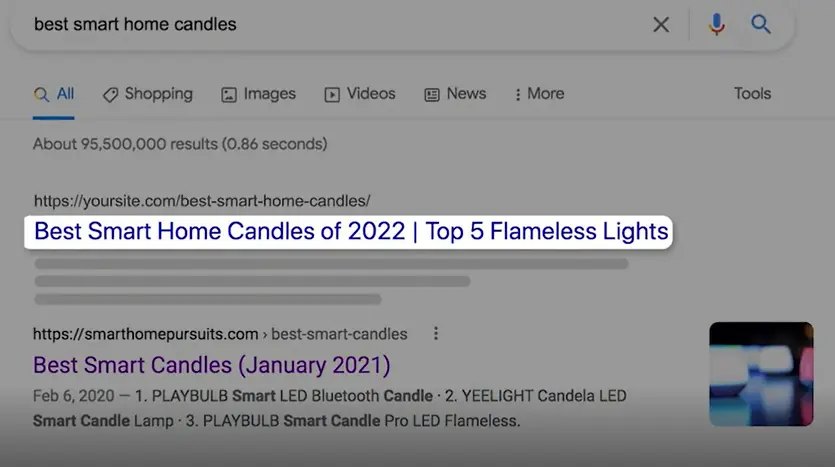
Your title tag is what ends up being shown in the Google search result here. That’s why it’s so important to optimize it not only for keywords but for clicks. You want your listing to stand out. While you’re at it, you want to fill out the description field.
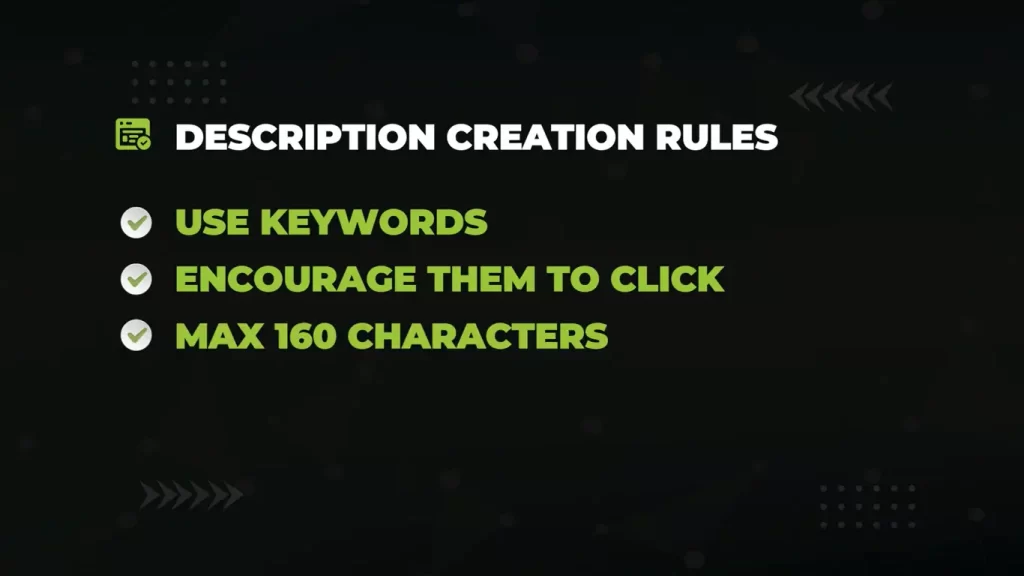
Here are the rules for creating a description. Put keywords such as best, smart, home, and candle in there. Google will highlight them as I’ll show you in a sec. Use Clever Copy to encourage them to click and limit to 160 characters.
An example description for this article would be ‘’light up your home with the best smart candles of 2022.’Find out which has the best…’’

Here’s what the description looks like in the search results. Notice the bold keywords that draw the eye. Also, notice what I’ve done with the cliffhanger at the end. Find out which one has the best.
Next is time to do a bit of research before you start writing your article. Remember back in high school when you would make an outline before writing an essay? We’re gonna do the same thing here. But to make search engines happy, they like to see a certain format.
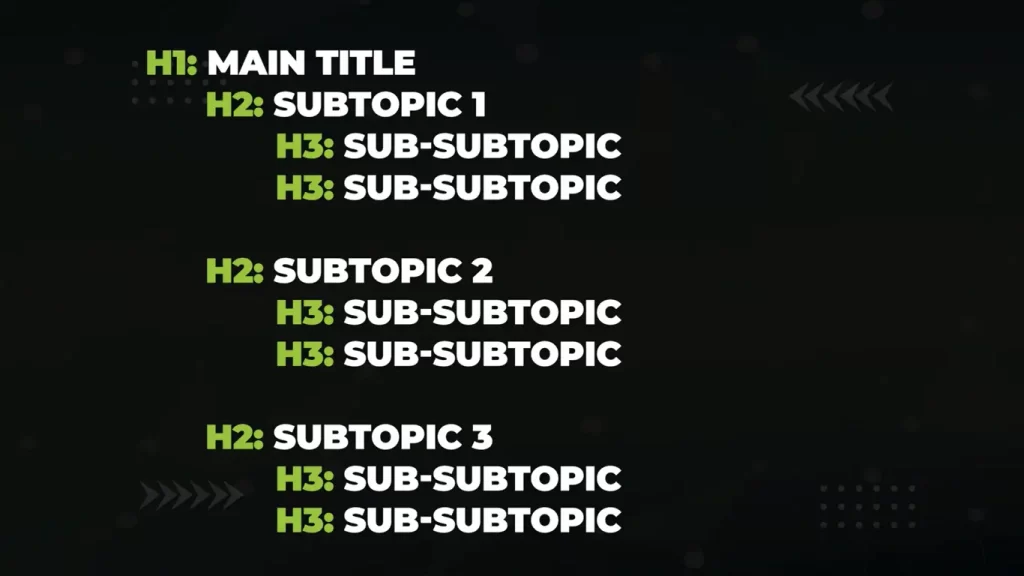
We have our H1 title up here at the top, which you’ve already learned how to create and add to your post. Underneath that, you have your subtopics marked as H2, and those subtopics are broken down further into sub subtopics called H3s and so forth.
Seems logical and organized, but where do we get these subtopics from? Straight from Google itself.
The answer to doing well on Google is always found on page one of Google. Open back up that article in first place for best smart home candles. See What is a Smart Candle heading? That’s an H2. So is this PLAYBULB Smart LED Bluetooth candle, and other candles.
Then we have the section down talking about “Why Do You Need a Smart Candle,” and “Smart Candle Ideas,” broken down into H3s too. Google obviously loves that article because they put it at the top of their results so we can assume that this outline is pretty damn good.
But here’s how you make yours even better. You’re going to open up even more articles for inspiration and create a super set outline based on what’s already working in Google.
Open up a Google Doc and create your well-researched master outline based on what Google already loves. Now, is the time to start writing.
Introduction Paragraph
Starting with the introduction paragraph which goes right here after the title. The introduction paragraph is the most important piece of content in your article. Its job is to get people to stay and read.
If people go to your article, read it for only a second, then bounce back to the search result. That’s a signal to Google that your content sucks
.
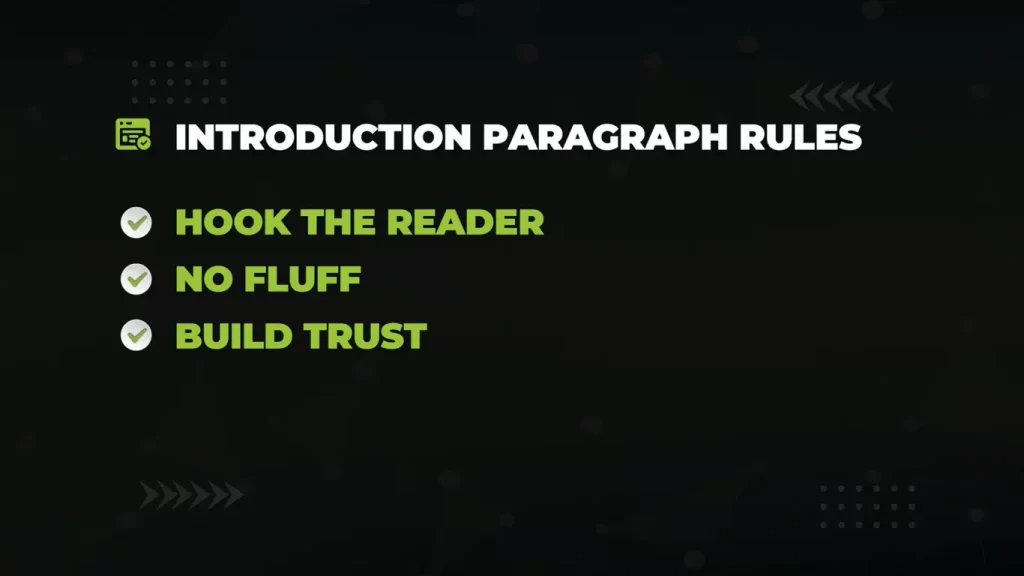
Here’s a rule for writing a killer introduction paragraph. The job of the intro is to hook the reader. Do whatever you can to make sure they read the rest of your article. Don’t have any fluff. Think about what they search for in order to land on your page.
This person searched for “Best smart home candle.” They already know what smart home candles are. You don’t need to start explaining them. Just get straight to the point.
Which one is the best? Build trust. Why would someone trust you to tell them which smart candles are the bomb?
Now, that you’ve written your introduction paragraph, it’s time to start filling out the rest of the content gaps between the H2 subtopics. What to write and how to say it? You want your content to read naturally.
Sure, adding keywords in your content is important to tell Google that you’re relevant to the topic of smart home candles. But when you overdo it, that’s called keyword stuffing and Google hates that.
If you were to write a sentence like, “The Simply Collected 3D Smart Candles. The best smart home candle that you can find for your home” This looks like (beep) to both readers and Google’s algorithm.
Use keywords but keep it looking natural. You also wanna add related keywords to your content. You can find related keywords by going to the bottom of the search result for your keyword and seeing what Google has on display.
Words like Google, Alexa, app, and electric are super important to sprinkle into your content. Now, that you’ve started on your article, how long does it need to be? How many words are ideal? Well, as you already know, the answer to Google is already on page one.
Open up the top-ranking article and see how long they wrote their piece. You can use the free Google Chrome plugin detail to find this out in a single click.
Now, it’s time to upload your finished article onto your website. As you already learned when users stay and read your content, that’s a huge ranking signal to Google. This has a lot to do with how your content looks to the reader.
Make sure to use bite-size paragraphs that are easy on the eyes and friendly to read. Use interesting images and videos to entertain people as they scroll. Lists are good for breaking up the text and using callouts to bring attention to important points in your content. Next,
what should your view URL be?
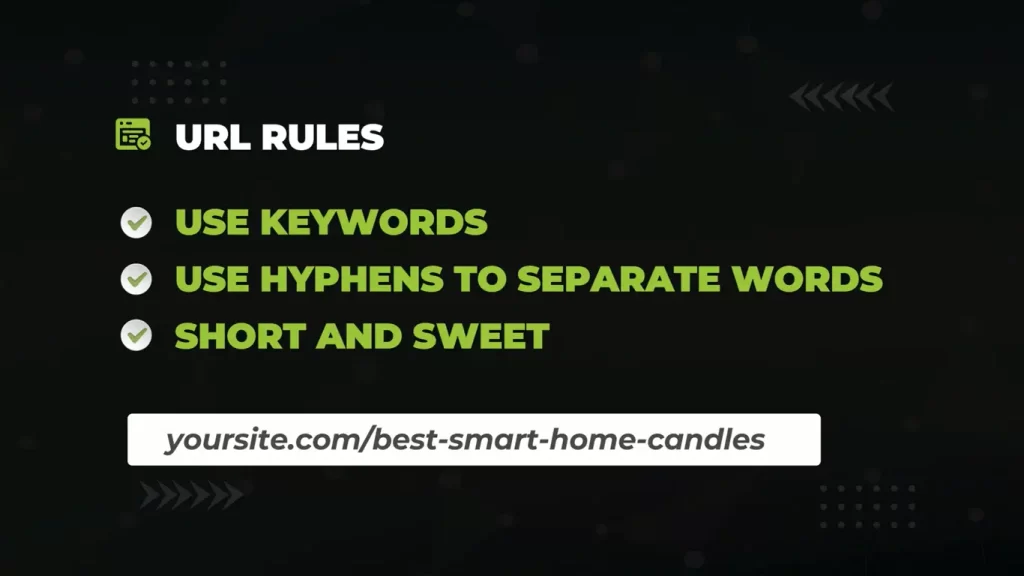
Insert keywords into the URL which is a major ranking factor. Separate words with hyphens and keep them short and sweet. Here’s what I’d use for our Smart Home Candle article. As you know, the process doesn’t stop there.
When you continue to write more content on a given topic such as smart home doorbells, thermostats, and lighting. Google will eventually start to think you’re an authority on the topic of smart homes. And when that happens, you’re gonna start seeing a huge traffic improvement on your website.
As you write more content, interlink those articles together. A link or backlink is when one article links to another article in its content and when users click that link, they end up at the destination. When two relevant articles link up.
That helps Google understand what these articles are about. A link can be created in your WordPress editor by highlighting the text that you want to use for the link.
Link Building
Speaking of links that take us to our next pillar of SEO foundations, and that’s link building.
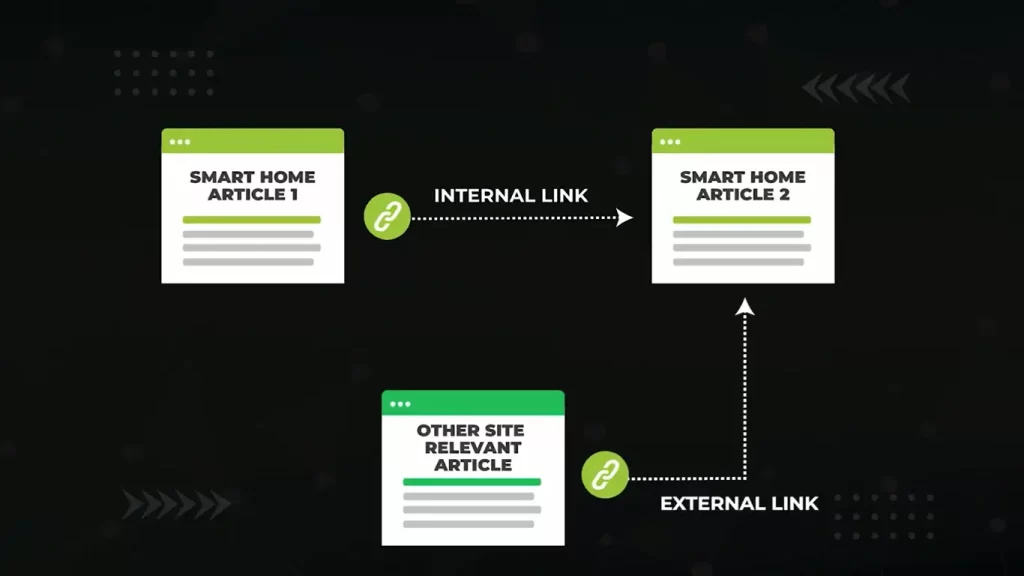
We just talked about internal links when one page of your own website links to another page on your website. You also need external links from other websites to link to your content. According to this study by ahrefs, the more links you have to your content, the more traffic you can expect to see.
External backlinks are one of the biggest ranking factors in Google’s algorithm and should not be ignored. Why? Because it’s like a vote. When one website links to another, it’s like saying, “I like this other website so much I’m willing to send my visitors there.”
Here’s how to build backlinks.
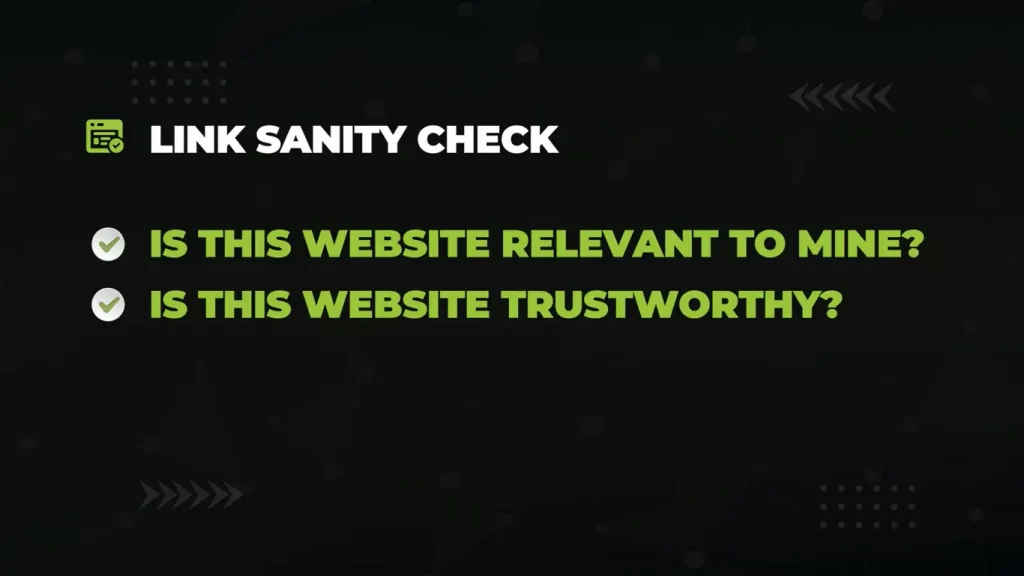
First, you need to identify where you want a link from. Ideally, you’re looking for other websites that are relevant to your own website.
Getting a backlink from a site about scuba diving to your site about smart homes isn’t gonna be helpful. You also want links from sites that are trustworthy.
And the easiest way to judge that is if the sites get Google traffic themselves. Once you’ve identified who you wanna the link from, it’s time to outreach to them with an email.
First, find the contact information for a website on their contact or about page. Then you wanna send them an email like this.
Hey, Reid,
I love your website and I’ve been a longtime reader.
I just wrote an article on Smart Home Candles that would be a great supplement to your content on budget-friendly, smart home devices.
If you wouldn’t mind linking to my article that would make my day.”
Thanks,
Jayan
Technical SEO
It’s time to move on to the third pillar of foundational SEO and that’s technical SEO. Don’t let the name intimidate you. This is the easiest part. Think of SEO as a race between websites to get to the top of Google.
You’ve already created content that Google loves. This is your car. You’ve built links to it. This is your fuel. Technical SEO is where you tune up your car to make sure it goes fast.
Conclusion
Luckily, SEO tools make this super easy and the free version of Screaming frog is more than enough to get the job done.

Here’s what (video clip whooshes) you’re looking for. Slow pages. Pages that look bad on mobile devices. Pages with no internal links. Pages that Google can’t find.
Any broken links. In this blog, I have shared the complete SEO for beginners with a step-by-step guide. Hope you enjoy it.



